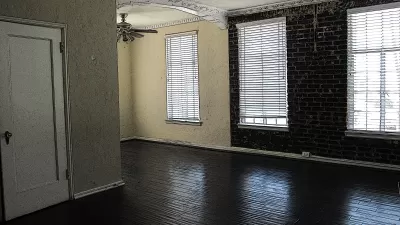With the upcoming expiration of unemployment insurance programs and the end of the nationwide eviction moratorium, Brookings fellow Jenny Schuetz shares insight on how to implement the most effective rent relief programs.

A recently published piece by Jenny Schuetz, a fellow at the Brookings Institution Metropolitan Policy Program, examines important considerations in cities' rent relief programs and offers advice for how these programs could be improved during the ongoing slate of evictions and the impending deepening of the eviction crisis. With the Centers for Disease Control and Prevention’s nationwide eviction moratorium set to expire on December 31, local governments face a new set of challenges in planning for effective rental assistance programs, executing those plans, and assessing the success of their policies.
At the beginning of the process, says Schuetz, localities should invest time in identifying specific and measurable goals in order to usefully plan around the best ways to achieve those goals and to identify possible challenges in implementing that plan. Schuetz notes three important questions that policymakers need to consider in making decisions related to this planning: Who will receive the relief? How will the funds be rationed? What will be included in the application process?
In addition to these considerations, Schuetz highlights the importance of accounting for the way in which a rent relief program interrelate to existing local housing programs. "Landlord-tenant laws vary across states and localities, creating an uneven patchwork of tenant protections such as landlord-tenant mediation programs, right to counsel, and the overall transparency and accountability of eviction processes," writes Schuetz. The disconnected nature of various legal processes related to tenant's rights produces challenges for local governments attempting to administer financial assistance. "Designating a single point of contact within the local government could help coordinate and integrate various programs," Schuetz suggests.
Schuetz also points out that a one-off relief payout does not match the long-lasting impact of long-term housing subsidies and that "ongoing evaluation is essential in making sure the programs achieve their goals and use limited resources effectively."
FULL STORY: To weather the coming eviction crisis, cities need better rent relief programs

Alabama: Trump Terminates Settlements for Black Communities Harmed By Raw Sewage
Trump deemed the landmark civil rights agreement “illegal DEI and environmental justice policy.”

Planetizen Federal Action Tracker
A weekly monitor of how Trump’s orders and actions are impacting planners and planning in America.

The 120 Year Old Tiny Home Villages That Sheltered San Francisco’s Earthquake Refugees
More than a century ago, San Francisco mobilized to house thousands of residents displaced by the 1906 earthquake. Could their strategy offer a model for the present?

In Both Crashes and Crime, Public Transportation is Far Safer than Driving
Contrary to popular assumptions, public transportation has far lower crash and crime rates than automobile travel. For safer communities, improve and encourage transit travel.

Report: Zoning Reforms Should Complement Nashville’s Ambitious Transit Plan
Without reform, restrictive zoning codes will limit the impact of the city’s planned transit expansion and could exclude some of the residents who depend on transit the most.

Judge Orders Release of Frozen IRA, IIJA Funding
The decision is a victory for environmental groups who charged that freezing funds for critical infrastructure and disaster response programs caused “real and irreparable harm” to communities.
Urban Design for Planners 1: Software Tools
This six-course series explores essential urban design concepts using open source software and equips planners with the tools they need to participate fully in the urban design process.
Planning for Universal Design
Learn the tools for implementing Universal Design in planning regulations.
Clanton & Associates, Inc.
Jessamine County Fiscal Court
Institute for Housing and Urban Development Studies (IHS)
City of Grandview
Harvard GSD Executive Education
Toledo-Lucas County Plan Commissions
Salt Lake City
NYU Wagner Graduate School of Public Service





























